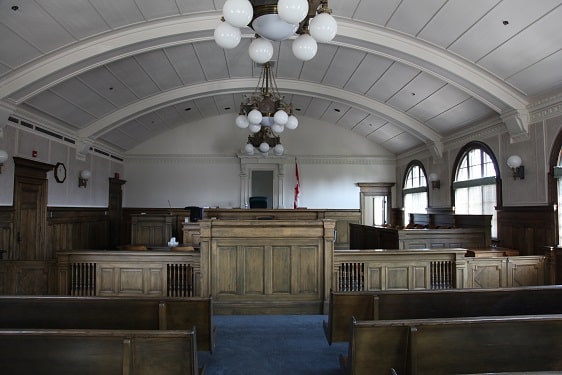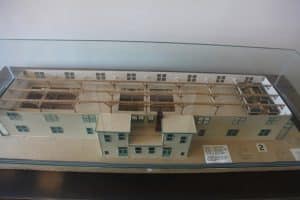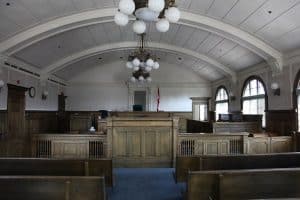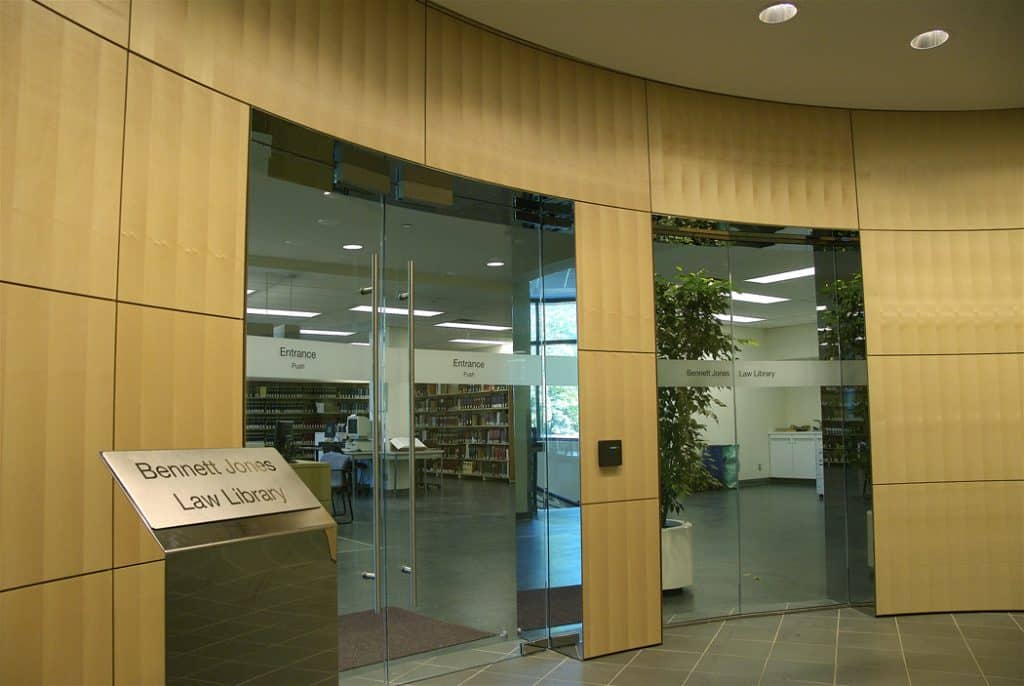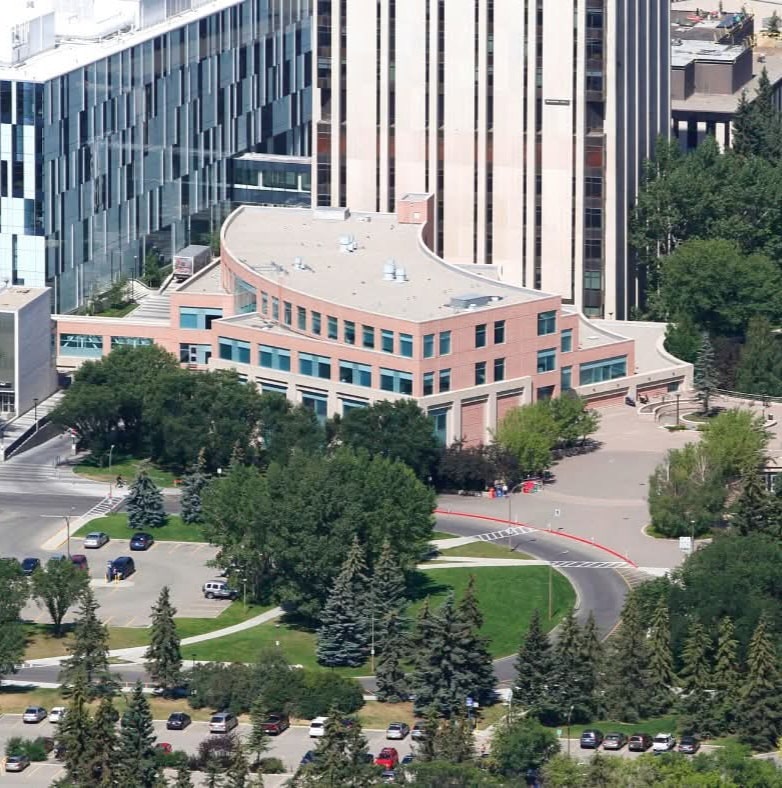When Canada joined the British in fighting Germany in August of 1914, Albertans from all walks of life lined up to volunteer on behalf of King and Country. Lawyers, law students, and other members of the legal profession were no exception to this particular wave of patriotism that swept the nation in the wake of open hostilities.
Many of those who volunteered believed the war would be over quickly. They would be home by Christmas. However, with the the changing nature of warfare, the advancements in technology and weaponry, and the intransigence of the enemy, soldiers would remain embroiled in the trenches until November 1918.
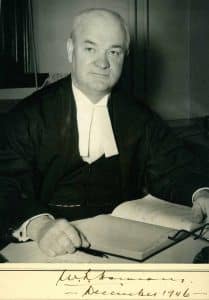 One individual who answered the call was Edmonton lawyer, William Robinson Howson. He volunteered in 1916 following his admission to the Bar. He was thirty-three years old. The Law Society of Alberta offered students who enlisted exemptions from their Articles, but it is unclear if Howson knew he could take advantage of this opportunity.
One individual who answered the call was Edmonton lawyer, William Robinson Howson. He volunteered in 1916 following his admission to the Bar. He was thirty-three years old. The Law Society of Alberta offered students who enlisted exemptions from their Articles, but it is unclear if Howson knew he could take advantage of this opportunity.
Howson was born on a farm in Norwood, Ontario, on March 6, 1883. As a young adult, he moved to Peterborough where he taught high school. In 1906, he switched careers to become a bank clerk. In fact, he became the youngest bank manager in Canada while working for the Sovereign Bank of Stirling, which became the Bank of Montreal in 1908.
Unsatisfied with his career prospects in Ontario, he relocated to Alberta in 1910 where he worked first as a bill collector in Segewick before becoming a real estate in Calgary.
The real estate business was lucrative in Alberta between 1911 and 1913 as immigration increased. For example, in 1912, 48,000 people moved to Alberta and there was $34.8 million worth of building permits obtained in Edmonton and Calgary. These were boom years in the young province.
However, as quickly as the boom came to Alberta it disappeared. In 1913, investments in building permits in the two major cities fell by nearly half to $17.9 million. They again fell in 1914 to $8.3 million. This downward trend continued for the remainder of the decade.
Given the economic climate, Howson, once again, switched careers. He enrolled at the University of Alberta and received his Bachelor’s degree in 1915 and his LL.B. in 1916. While in university he was an excellent student and was involved in several extra-curricular activities and organizations. Upon graduation from law school, he was awarded the Gold Medal.
He articled with the A.G. Mackay in Edmonton and was admitted to the Alberta Bar on January 11, 1916, when he was sworn in by the Honourable W.C. Ives.
The January 20, 1916, issue of The Conservator, a Fort Saskatchewan newspaper, reported that Howson was opening a law office in that small town that would be run in conjunction with his practice in Edmonton, where he was a partner at Boothe, Morrow & Howson. The article announced that his Fort Saskatchewan office would be open initially only Saturdays, but that he hoped to have regular office hours shortly.
During this period of time, the University of Alberta appointed Howson to teach classes on the Law of Banking and Bills of Exchange. His pervious career in banking came in handy as he embarked on a part-time law school lecturer.
Howson enlisted with the First Battalion, Canadian Tank Corps. on April 20, 1916. He remained with that battalion until his discharge on February 28, 1919. Unfortunately, his record of service and activities overseas are sparse, but for the records indicated that he fought in France, and remained in that country following the signing of the Armistice on November 11, 1918.
Following his return to Edmonton, Howson became a member of the Parlee, Freeman and Howson firm. He was appointed K.C. in 1935. He remained with that firm until his appointment to the Bench on March 2, 1936.
During his legal career, Howson also dabbled in politics becoming the leader of the provincial Liberal Party in 1932. He was an ardent opponent of the United Farmers of Alberta (UFA). Despite his party’s electoral loss to the Social Credit Party, he was elected an Edmonton MLA during the 1935 election. However, his political life was short-lived and he resigned after only one year in the legislature when he was appointed to the Supreme Court of Alberta, Trial Division.
When Germany invaded Poland on September 1, 1939, Howson, age fifty-six, was beyond the age for enlistment. Moreover, he was fairly ensconced his is position at the Supreme Court of Alberta. Despite this, he did not escape the World War II entirely. During the war, Canada housed nearly 34,000 German POWs across the country. Two of those camps were in Medicine Hat and Lethbridge respectively. On the evening of September 10, 1944, in Camp No. 132 in Medicine Hat, four ardent Nazi prisoners suspected a fellow prisoner of sympathising with Operation Valkyrie — the attempt on Adolf Hitler’s life on July 20, 1944.
The alleged sympathizer, Karl Lehman, was lured in to a tent, severely beaten and hanged by the four inmates. Howson presided over the trial that sent Lehman’s four fellow POWs to the gaols in Lethbridge.
By the time Howson heard this infamous case, he had been elevated to Chief Justice of the Supreme Court of Alberta, Trial Division, where he remained until June 25, 1952. Prior to becoming Chief Justice, he had spent two years sitting on the Supreme Court of Alberta, Appellate Division.
Howson was considered a competent judge. He heard many cases dealing with a variety of legal issues. Though, for the most part, his interpretations were strictly legal, he did take into consideration the intentions and behaviors of the parties.
The decision of Borys v. Canadian Pacific Railway Company in 1951 is considered one of his most celebrated cases. Michael Borys, a farmer, contested Imperial Oil’s right to drill under his land near Leduc-Woolhead. When the land was purchased in 1906 from the CPR the company reserved title to coal, petroleum and valuable stones. The company then leased drilling rights to Imperial Oil after natural gas deposits were discovered.
At trial, two issues were under consideration: did natural gas fall under the definition of petroleum? If not, could Imperial extract the oil without producing or destroying the natural gas?
Howson ruled that petroleum did not include natural gas. He also held that Imperial Oil could not successfully drill for oil without disturbing the natural gas deposits. Furthermore, he noted that the CPR’s reservation did not specify the right to work and carry away oil.
This decision was partially overturned at the Supreme Court of Alberta, Appellate Division. Writing for the panel, the Honourable Harold Parlee agreed with the difference between natural gas and petroleum. He further concluded that Borys had the rights to the gases while Imperial owned the rights to the liquids. However, Parlee rejected Howson’s logic in relation to the protection of the rights of surface owners and the damage from mining. He concluded that the damage to Borys’ property would be underground, not on the surface, thus, the laws for mining did not apply.
Near of the end of May 1952, Howson resigned from the Courts for unspecified health reasons. Not even a month later, on June 25, 1952, he passed away at the age of 69.
